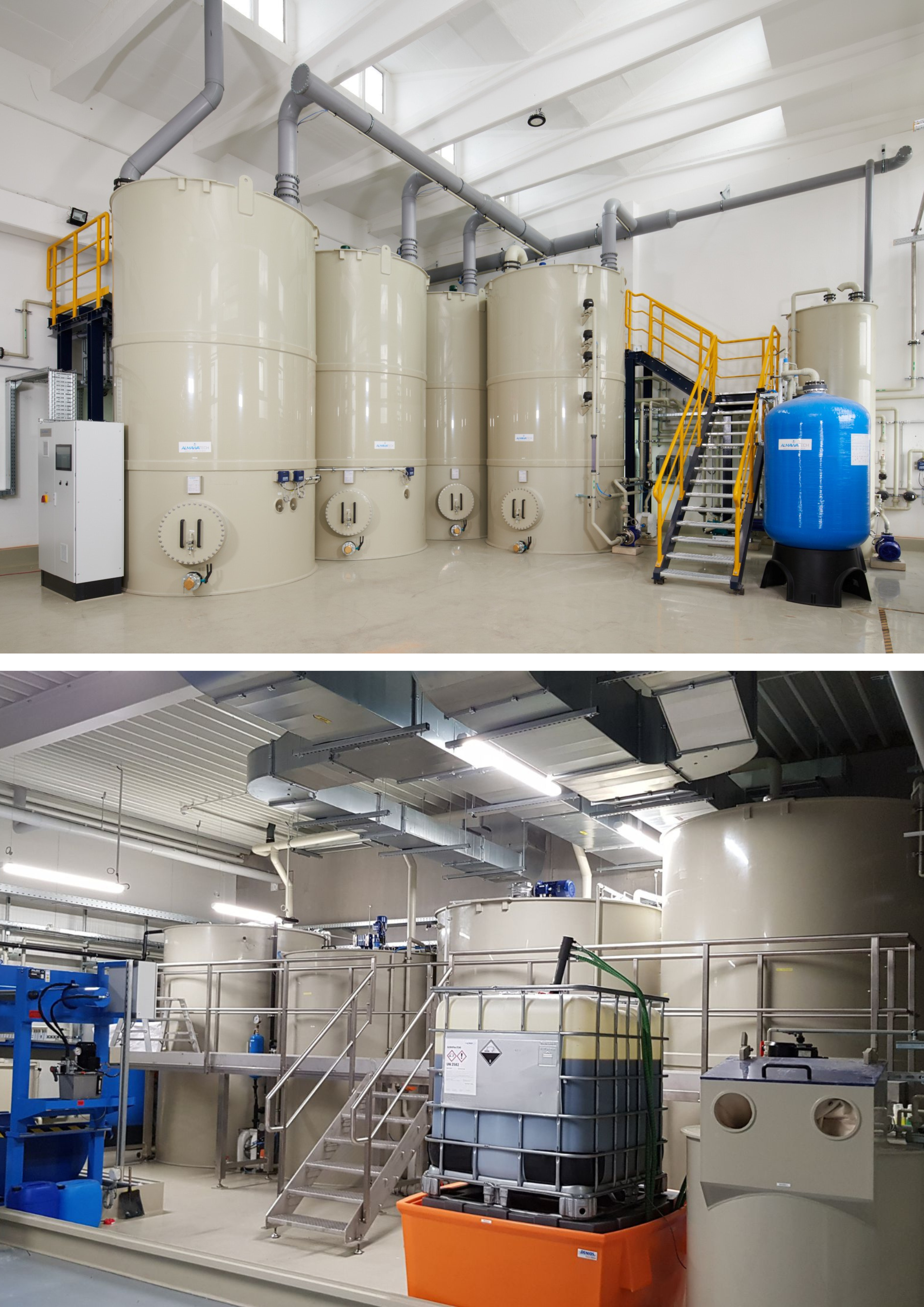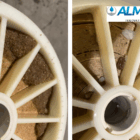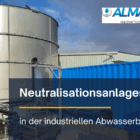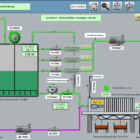Turbidity measurement is an essential parameter in water treatment and wastewater treatment. It describes the degree of light scattering and absorption in a liquid caused by suspended particles such as suspended solids, microorganisms or colloidal impurities. Precise turbidity measurement provides important information about water quality, process stability and the efficiency of purification processes.
Table of contents
Definition and physical background
Turbidity is caused by particles that are larger than molecules but small enough to remain in suspension. These particles scatter and absorb light, reducing the transparency of the liquid.
- Factors influencing turbidity:
- Particle size: Larger particles scatter light more strongly.
- Particle concentration: Higher concentrations increase the turbidity.
- Particle properties: The shape, surface properties and refractive index of the particles influence light scattering.
Turbidity is usually measured in NTU (Nephelometric Turbidity Units) or FNU (Formazin Nephelometric Units). These units are internationally standardized and are based on the scattering of light by particles.
Measuring principles of turbidity measurement
Turbidity is measured by optical methods using light sources and detectors to quantify the scattering or attenuation of light.
1. nephelometric measurement (scattered light measurement):
- Principle: Light is shone into the water and the scattering of the light is measured at an angle of 90° to the incident light.
- Advantages:
- Particularly sensitive to low turbidity.
- Suitable for drinking water, ultrapure water and process water.
- Areas of application: Monitoring of wastewater treatment plant effluents, drinking water treatment, process control in membrane systems.
2. transmission (transmitted light measurement):
- Principle: The light is transmitted through the water and the light loss due to absorption and scattering is measured.
- Advantages:
- Suitable for highly turbid water.
- Provides quantitative data on particle concentration.
- Areas of application: Waste water treatment, sedimentation control.
3. multi-angle measurement:
- Principle: Light scattering is measured from several angles to determine the particle size and distribution.
- Advantages:
- Provides detailed information on the physical properties of the particles.
- Supports the optimization of flocculation and sedimentation processes.
Technologies and sensors
Modern turbidity meters use LEDs or lasers as the light source and highly sensitive photodetectors for light measurement. The devices are available in various configurations:
- Inline sensors: Installed directly in pipes; enable continuous monitoring without sampling.
- Portable devices: Hand-held measuring devices for quick on-site measurements.
- Laboratory devices: High precision and extensive analysis options.
Areas of application for turbidity measurement
Turbidity measurement is important in almost all areas of industrial water treatment and wastewater treatment.
1. water treatment
- Trinkwasser: Überwachung von Filtrationsprozessen zur Einhaltung der Grenzwerte (< 0,1 NTU gemäß WHO).
- Ultrapure water: Checking the filtration and reverse osmosis systems to minimize particle contamination.
- Cooling water: Monitoring of suspended particles that can cause fouling or deposits in heat exchangers.
2. wastewater treatment
- Wastewater treatment plants: monitoring of primary and secondary treatment processes to evaluate sedimentation efficiency.
- Precipitation and flocculation: Optimization of the dosing of precipitation and flocculation aids.
- Direct dischargers: Compliance with legal limits for discharge into water bodies.
3. industrial applications
- Food and beverage industry: Checking process water and wastewater streams for particle contamination.
- Pharmaceutical industry: Ensuring purity in the manufacture of pharmaceuticals.
- Power plant chemistry: Monitoring feed water and condensate for turbidity.

Photo: Our ALMA CHEM MCW CP system with turbidity measurement for effective clear phase removal in the treatment reactor
Optimization potential through turbidity measurement
Turbidity measurement makes a decisive contribution to the efficiency and cost-effectiveness of water treatment processes:
- Reduction in the use of chemicals: Precise dosing of precipitants and flocculants thanks to continuous turbidity measurement.
- Protection of membranes: Prevention of fouling through early detection of particle contamination.
- Process control: Real-time data enables the optimization of sedimentation, filtration and other process steps.
Conclusion
Turbidity measurement is a key technology in water treatment and wastewater treatment that enables precise control of water quality. By using modern measurement technologies, industrial processes can be optimized, costs reduced and environmental regulations complied with. The combination of nephelometric, transmissive and multi-angle based methods offers a comprehensive solution to the challenges of water treatment in various industries.
For further information on our products, please feel free to contact us at any time!








